????? ???????? ?????? (w MetalLB)
5 likes1,016 views
https://cncg-kr.net/ kubernetes KR user-group 2020
1 of 28
Downloaded 17 times

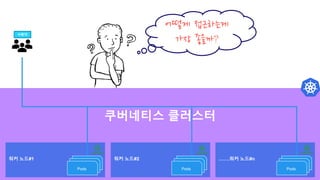
![Hello!
[ ?????????_???? ]@Magazone
Linkedin(?): https://www.linkedin.com/in/hoonjo/
???/???? IT ??? ?? ?? Megazone GCP ???? ???
??? ??? ???? ?? ??? ?? ??. ? ?? ??
?????? ?? ???? ?? ??? ? ???? ?? ??? ??
???? ??????? ?? ???? ??.
???/????? ??? ???? ?? ???? ?? ???
???? ???, ??? ?? ??? ??? ?? ?? ????
'CKA(?? ????? ???) ? ???? ?'? ?? ???
?????. ?? ????? ?? Ī«IT ??? ???? ??Ī»
? '??? ????'? ???? ?? ??.
??? ???? Ī║???/???? ???? ?? ??? ??
?????Ī╗(????)Ī╗? Ī║???? ???Ī╗(??????)
? ?? IT??? ???? ?? ?? ???.](https://image.slidesharecdn.com/metallb-201031045435/85/w-MetalLB-3-320.jpg)

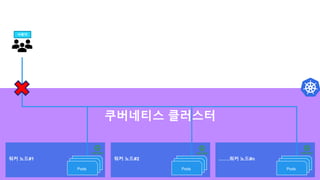


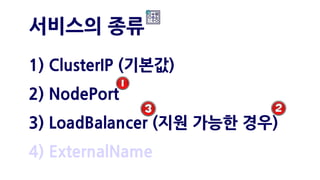
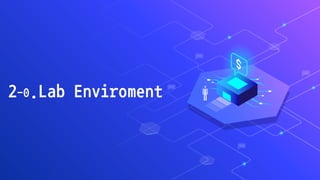



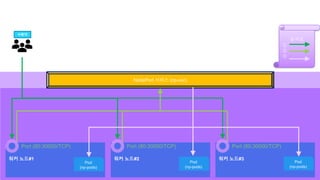

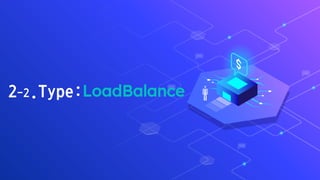






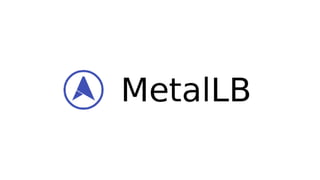
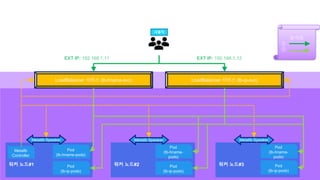





Ad
Recommended
Spring Meetup Paris - Back to the basics of Spring (Boot)Eric SIBER
?
Le document est une pr©”sentation d©”taill©”e du cadre Spring et de son utilisation pour le d©”veloppement d'applications Java, couvrant des th©©mes comme les versions du framework, la d©”claration de beans, l'injection de d©”pendances, ainsi que les concepts cl©”s tels que l'inversion de contr?le et les design patterns. Il aborde ©”galement l'historique de Spring, les outils compatibles, et les diff©”rentes approches de configuration y compris XML, annotations, et Java config. Enfin, il ©”voque les fonctionnalit©”s avanc©”es telles que les namespaces et l'externalisation des propri©”t©”s.▒½▓įŠ▒│┘▓ŌżŪź¬ź¾źķźżź¾ź▓®`źÓū„ż├ż┐╗░
▒½▓įŠ▒│┘▓ŌżŪź¬ź¾źķźżź¾ź▓®`źÓū„ż├ż┐╗░torisoup
?
Unityż╚Photon Cloudż“ĮMż▀║Žż’ż╗żŲź▓®`źÓż“ū„ż├ż┐įÆ
https://peatix.com/event/323261KGC 2016: HTTPS ? ??? ?? ?? ????? ? - Korea Games Conference
KGC 2016: HTTPS ? ??? ?? ?? ????? ? - Korea Games ConferenceXionglong Jin
?
??: HTTPS ? ? ?? ??? ??? ?????▓įŠ▒┤ŪżŪū„ż├ż┐Ą■│▄┤┌┤┌▒░∙▒╗Õ░┬░∙Š▒│┘▒░∙ż╦ēõż©ż┐żķ└²═Ōż╦ż╩ż├ż┐
▓įŠ▒┤ŪżŪū„ż├ż┐Ą■│▄┤┌┤┌▒░∙▒╗Õ░┬░∙Š▒│┘▒░∙ż╦ēõż©ż┐żķ└²═Ōż╦ż╩ż├ż┐chibochibo
?
The exception occured after changing to BufferedWriter created with nio.Building the Game Server both API and Realtime via c#
Building the Game Server both API and Realtime via c#Yoshifumi Kawai
?
Report:
https://dev.classmethod.jp/articles/game-server-development-seminar-by-cysharp/Windows Registered I/O (RIO) vs IOCP
Windows Registered I/O (RIO) vs IOCPSeungmo Koo
?
Windows 8 ? Windows Server 2012? ??? Network Extensions? RIO? ?? ??? ?? ??, ??? ?? ?????.
??? ????
??? ????Arawn Park
?
The document discusses the architecture of modular monoliths using Spring, emphasizing the benefits of a single project structure, straightforward infrastructure, and independent service deployment. It outlines a systematic approach to modularization, encapsulation, and context boundaries, supported by various references and resources. Additionally, it highlights that modular designs allow for better organization and specialized problem-solving capabilities.? ?????? systemd? cgroup? ????? ???
? ?????? systemd? cgroup? ????? ???Jo Hoon
?
? ?????? cgroup? ????? systemd? ??? ??? ??? ?????.
?? v1.22? ????? systemd? ????? ??? ??? ???? ????. ▓č▓╣▓ĄŠ▒│”░┐▓įŠ▒┤Ū▓įĪ½░õ#żŪź▓®`źÓźĄ®`źąż“┐¬░kżĘżĶż”Ī½
▓č▓╣▓ĄŠ▒│”░┐▓įŠ▒┤Ū▓įĪ½░õ#żŪź▓®`źÓźĄ®`źąż“┐¬░kżĘżĶż”Ī½torisoup
?
https://vsuc.connpass.com/event/146588/Python ???? ?????? : RPC framework ?
Python ???? ?????? : RPC framework ??? ?
?
NDC Python ???? ??????? : ??? ???? ?? ?? ?? ???? ??? ?????. ?? ?? ?? "??" ?? ???? ???????.
? ??? ? ??? RPC Framework ? Thrift, gRPC? ???? ??? ??? ??? ?????? ?? RPC framework ?? ??? ??/?? ??? ? ????? ???? ? ??? ?????? ?? ??? ??? ?????.
??? ??? ?? RPC ? ???? ?? ???? ??? ??? ??? ??????.???? ?? Amazon GameLift ?? - ???, AWS ???? ????
???? ?? Amazon GameLift ?? - ???, AWS ???? ????Amazon Web Services Korea
?
AWS? ???? ?? ???? ???? Ī«Amazon GameLift ??Ī» ? ??????.
GameLift? ?????? ?? ?? ????? ?? ??? ??, ??, ???? ? ???? ?? ??? ????, ? ????? Amazon GameLift? ??? ??? 1:1 ?? ?? ??? ?????.NGINX Back to Basics: Ingress Controller (Japanese Webinar)
NGINX Back to Basics: Ingress Controller (Japanese Webinar)NGINX, Inc.
?
Check out this back to basics Japanese webinar covering NGINX Ingress Controller.Azure PlayFab ź╚źņ®`ź╦ź¾ź░┘Y┴Ž
Azure PlayFab ź╚źņ®`ź╦ź¾ź░┘Y┴ŽDaisuke Masubuchi
?
ź▓®`źÓźĄ®`źą®`ż╚żĘżŲ▒╩▒¶▓╣▓Ō╣¾▓╣▓·ż“╩╣ż”╩▒ż╬źŽź¾ź║ź¬ź¾źżź┘ź¾ź╚ż“żĘż▐żĘż┐ĪŻ1─Ļęį╔ŽĮU╣²żĘżŲż▐ż╣ż¼żĮż╬╩▒ż╬ū╩┴Žż“╣▓ėążĘż▐ż╣ĪŻ░∙▒▓╣│”│┘-▓§│”░∙Š▒▒Ķ│┘▓§żŽĘ╔▒▓·▒Ķ▓╣│”░ņżŪ║╬ż“żĘżŲżżżļż╬ż½
░∙▒▓╣│”│┘-▓§│”░∙Š▒▒Ķ│┘▓§żŽĘ╔▒▓·▒Ķ▓╣│”░ņżŪ║╬ż“żĘżŲżżżļż╬ż½ĢÜ ╚²š¼
?
+ create-react-appż¼└¹ė├żĘżŲżżżļreact-scriptżŽĪówebpackżŪ║╬ż“żĘżŲżżżļż╬ż½
+ `eject` ź│ź▐ź¾ź╔żŪÆĘ╚ļżĄżņżļįOČ©źšźĪźżźļ╚║żŽreact-scriptż╬żŌż╬ż╩ż╬żŪĪóįOČ©ż“ēõĖ³ż╣żļż╚żŁż╬▓╬┐╝ż╦▒½▓įŠ▒│┘▓Ōż╦żĶżļźĻźóźļź┐źżźÓ═©ą┼ż╚▓č▓╣▓ĄŠ▒│”░┐▓įŠ▒┤Ū▓įż╦żĶżļ░õ#┤¾═│ę╗└Ē┬█ż╬īgŽų
▒½▓įŠ▒│┘▓Ōż╦żĶżļźĻźóźļź┐źżźÓ═©ą┼ż╚▓č▓╣▓ĄŠ▒│”░┐▓įŠ▒┤Ū▓įż╦żĶżļ░õ#┤¾═│ę╗└Ē┬█ż╬īgŽųYoshifumi Kawai
?
UnityĄ└ł÷ Š®Č╝ź╣ź┌źĘźŃźļ4żżż▐żĄżķ╬┼ż▒ż╩żż▓╣░∙│Šż“╩╣ż├ż┐▒ĘĘĪ░┐▒Ęż╬╗∙┤Īż╚╗Ņė├╩┬└²
żżż▐żĄżķ╬┼ż▒ż╩żż▓╣░∙│Šż“╩╣ż├ż┐▒ĘĘĪ░┐▒Ęż╬╗∙┤Īż╚╗Ņė├╩┬└²Fixstars Corporation
?
2021─Ļ8į┬5╚šķ_┤▀ĪĖżżż▐żĄżķ╬┼ż▒ż╩żż▓╣░∙│Šż“╩╣ż├ż┐▒ĘĘĪ░┐▒Ęż╬╗∙┤Īż╚╗Ņė├╩┬└²Ī╣ź╗ź▀ź╩®`┘Y┴ŽżŪż╣ĪŻMore Related Content
What's hot (20)
Windows Registered I/O (RIO) vs IOCP
Windows Registered I/O (RIO) vs IOCPSeungmo Koo
?
Windows 8 ? Windows Server 2012? ??? Network Extensions? RIO? ?? ??? ?? ??, ??? ?? ?????.
??? ????
??? ????Arawn Park
?
The document discusses the architecture of modular monoliths using Spring, emphasizing the benefits of a single project structure, straightforward infrastructure, and independent service deployment. It outlines a systematic approach to modularization, encapsulation, and context boundaries, supported by various references and resources. Additionally, it highlights that modular designs allow for better organization and specialized problem-solving capabilities.? ?????? systemd? cgroup? ????? ???
? ?????? systemd? cgroup? ????? ???Jo Hoon
?
? ?????? cgroup? ????? systemd? ??? ??? ??? ?????.
?? v1.22? ????? systemd? ????? ??? ??? ???? ????. ▓č▓╣▓ĄŠ▒│”░┐▓įŠ▒┤Ū▓įĪ½░õ#żŪź▓®`źÓźĄ®`źąż“┐¬░kżĘżĶż”Ī½
▓č▓╣▓ĄŠ▒│”░┐▓įŠ▒┤Ū▓įĪ½░õ#żŪź▓®`źÓźĄ®`źąż“┐¬░kżĘżĶż”Ī½torisoup
?
https://vsuc.connpass.com/event/146588/Python ???? ?????? : RPC framework ?
Python ???? ?????? : RPC framework ??? ?
?
NDC Python ???? ??????? : ??? ???? ?? ?? ?? ???? ??? ?????. ?? ?? ?? "??" ?? ???? ???????.
? ??? ? ??? RPC Framework ? Thrift, gRPC? ???? ??? ??? ??? ?????? ?? RPC framework ?? ??? ??/?? ??? ? ????? ???? ? ??? ?????? ?? ??? ??? ?????.
??? ??? ?? RPC ? ???? ?? ???? ??? ??? ??? ??????.???? ?? Amazon GameLift ?? - ???, AWS ???? ????
???? ?? Amazon GameLift ?? - ???, AWS ???? ????Amazon Web Services Korea
?
AWS? ???? ?? ???? ???? Ī«Amazon GameLift ??Ī» ? ??????.
GameLift? ?????? ?? ?? ????? ?? ??? ??, ??, ???? ? ???? ?? ??? ????, ? ????? Amazon GameLift? ??? ??? 1:1 ?? ?? ??? ?????.NGINX Back to Basics: Ingress Controller (Japanese Webinar)
NGINX Back to Basics: Ingress Controller (Japanese Webinar)NGINX, Inc.
?
Check out this back to basics Japanese webinar covering NGINX Ingress Controller.Azure PlayFab ź╚źņ®`ź╦ź¾ź░┘Y┴Ž
Azure PlayFab ź╚źņ®`ź╦ź¾ź░┘Y┴ŽDaisuke Masubuchi
?
ź▓®`źÓźĄ®`źą®`ż╚żĘżŲ▒╩▒¶▓╣▓Ō╣¾▓╣▓·ż“╩╣ż”╩▒ż╬źŽź¾ź║ź¬ź¾źżź┘ź¾ź╚ż“żĘż▐żĘż┐ĪŻ1─Ļęį╔ŽĮU╣²żĘżŲż▐ż╣ż¼żĮż╬╩▒ż╬ū╩┴Žż“╣▓ėążĘż▐ż╣ĪŻ░∙▒▓╣│”│┘-▓§│”░∙Š▒▒Ķ│┘▓§żŽĘ╔▒▓·▒Ķ▓╣│”░ņżŪ║╬ż“żĘżŲżżżļż╬ż½
░∙▒▓╣│”│┘-▓§│”░∙Š▒▒Ķ│┘▓§żŽĘ╔▒▓·▒Ķ▓╣│”░ņżŪ║╬ż“żĘżŲżżżļż╬ż½ĢÜ ╚²š¼
?
+ create-react-appż¼└¹ė├żĘżŲżżżļreact-scriptżŽĪówebpackżŪ║╬ż“żĘżŲżżżļż╬ż½
+ `eject` ź│ź▐ź¾ź╔żŪÆĘ╚ļżĄżņżļįOČ©źšźĪźżźļ╚║żŽreact-scriptż╬żŌż╬ż╩ż╬żŪĪóįOČ©ż“ēõĖ³ż╣żļż╚żŁż╬▓╬┐╝ż╦▒½▓įŠ▒│┘▓Ōż╦żĶżļźĻźóźļź┐źżźÓ═©ą┼ż╚▓č▓╣▓ĄŠ▒│”░┐▓įŠ▒┤Ū▓įż╦żĶżļ░õ#┤¾═│ę╗└Ē┬█ż╬īgŽų
▒½▓įŠ▒│┘▓Ōż╦żĶżļźĻźóźļź┐źżźÓ═©ą┼ż╚▓č▓╣▓ĄŠ▒│”░┐▓įŠ▒┤Ū▓įż╦żĶżļ░õ#┤¾═│ę╗└Ē┬█ż╬īgŽųYoshifumi Kawai
?
UnityĄ└ł÷ Š®Č╝ź╣ź┌źĘźŃźļ4żżż▐żĄżķ╬┼ż▒ż╩żż▓╣░∙│Šż“╩╣ż├ż┐▒ĘĘĪ░┐▒Ęż╬╗∙┤Īż╚╗Ņė├╩┬└²
żżż▐żĄżķ╬┼ż▒ż╩żż▓╣░∙│Šż“╩╣ż├ż┐▒ĘĘĪ░┐▒Ęż╬╗∙┤Īż╚╗Ņė├╩┬└²Fixstars Corporation
?
2021─Ļ8į┬5╚šķ_┤▀ĪĖżżż▐żĄżķ╬┼ż▒ż╩żż▓╣░∙│Šż“╩╣ż├ż┐▒ĘĘĪ░┐▒Ęż╬╗∙┤Īż╚╗Ņė├╩┬└²Ī╣ź╗ź▀ź╩®`┘Y┴ŽżŪż╣ĪŻSimilar to ????? ???????? ?????? (w MetalLB) (20)
????? ?? ??? ???? ???? ??? ?? ??
????? ?? ??? ???? ???? ??? ?? ??Ian Choi
?
???? ???? ????? ???? ?? ?? K8s ??? ??? Azure Kubernetes Services (AKS)? ??? ???? ?? ?????. ????? ?? ??? ?? ???? 2022? 5? ???????.Toward kubernetes native data center
Toward kubernetes native data center?? ?
?
https://cncg-kr.net/ ?? ??? ?????.
IT ???? ??????? ??? ???(Baremetal server, Virtual machine, network switch, database, ?)? ?????. ?? ???? ??? ????? ??? ????? ?? ?? ???? ?????. ?? IaaS, PaaS? ?? Cloud???? ????? ?? ??? ???? ?? ???? ?? ?? ???? ????? ?????? ??????? ?? ???? ???? ??? ?? ???. ??? ??? ?? ??? ??? ???? kubernetes? ?? ????? ???? ???? ???? ???? ??? ? ????? ? ??? ???? ??? ?? ?????? ?? ? ? ??? ???? ?? ?? kubernetes ? ? ?? ????? ?? ????? ???.[KAU UMC ????] ???? ??? ?? ??? ???? - ???
[KAU UMC ????] ???? ??? ?? ??? ???? - ??? Boin Kim
?
???? ???? 2?? ??(scale-up, scale-out)? scale-out?? ?? ????? ???? ?????? ?? ?????.
AWS ELB? Auto Scaling? ?? EC2 ????? ??????? ??? ?? ?????. Cloud-Barista ?7? ???? : ?????? ?????? ???? ?? ?? (CB-Ladybug)
Cloud-Barista ?7? ???? : ?????? ?????? ???? ?? ?? (CB-Ladybug)Cloud-Barista Community
?
[ CB-Ladybug - ?????? ?????? ???? ?? ?? (Multi-Cloud Application Execution Environment Integration Management) ]
- CB-Ladybug ?? ? ??
- CB-Ladybug ?? ?? ? ?? ???
- CB-Ladybug ?? ? ?? ??
- CB-Ladybug ?? ? ?? ??
- CB-Ladybug ?? ???
# ????(YouTube) : https://youtu.be/VDns6ZhiwLs
---------------------------------------------------------------------------------------------
# Cloud-Barista Community Homepage : https://cloud-barista.github.io
# Cloud-Barista Community GitHub : https://github.com/cloud-barista
# Cloud-Barista YouTube channel : https://youtube.com/@cloud-barista
# Cloud-Barista ║▌║▌▀ŻShare : https://cloud-barista.github.io/slideshare???? ????? ????? ????
???? ????? ????? ????InfraEngineer
?
??? / ?? - <???? ????? ????? ????>
"??? ??? ???? ???? ?????
???? ????? ????? ????? ????? ????????.
(??)????? ?? ?? ?? ???? ?? ??? ???? ???? ???."
??: https://youtu.be/fvWHLrMjdmI
??: https://www.facebook.com/groups/InfraEngineer[?????????? ??? ?? ???] ?????????? ????? ??(??? ???? ??? ????)
[?????????? ??? ?? ???] ?????????? ????? ??(??? ???? ??? ????)NAVER CLOUD PLATFORM???? ???? ???
?
???? ???? ?????????? ????? ??? ????? ? ??? ??? ????. | From Docker to Naver Cloud Platform Kubernetes Service, we will introduce you to the entire process.K8s beginner 2_advanced_ep02_201904221130_post
K8s beginner 2_advanced_ep02_201904221130_postInho Kang
?
Kubernetes internal Series - Episode 2
Kubernetes Worker Node Component(Kubelet, kube-proxy, Container Runtime Interface) & Kubernetes NetworkFinal 07.???? ???? ???? ??? ?? ??
Final 07.???? ???? ???? ??? ?? ??Opennaru, inc.
?
Immutable Infrastructure? ???? ????? ???? ?? ??
Prometheus, Grafana, OPENMARU APMkubernetes from beginner to advanced
kubernetes from beginner to advancedOracle Korea
?
- ?????? ????(Master Node, Worker Node)? ??? ???? ?? ??
- ?????? ?? ????? Networking(Docker Network, k8s Network, Load Balancing with istio)kubernetes : From beginner to Advanced
kubernetes : From beginner to AdvancedInho Kang
?
This presentation start from basic concept such as container and container orchestration
And then go through Kubernetes internal especially Master Node components and Work Node components and show and explain core mechanism with codes.Backend Master | 1.1 Enhancing performance - Scalability (Scale UP & OUT)
Backend Master | 1.1 Enhancing performance - Scalability (Scale UP & OUT)Kyunghun Jeon
?
Backend Master Study 3??
@author ??? @date 18.05.06
- Study Curriculum : https://github.com/Backend-Masters/report
- Youtube : https://youtu.be/Rb-A6SeJ9_MKubernetes on Premise
Kubernetes on PremiseChan Shik Lim
?
Talk about Kubernetes cluster on baremetal servers for serve internal services.
Sharing my experiences about setup and manage kubernetes cluster on premise.
At first, start with single master kubernetes cluster and enhanced by many opensource softwares.
Add more master nodes for increase server availability.
Use Rook, MetalLB, Ceph, mysql-operator and more opensource projects.Ad
More from Jo Hoon (20)
???? (Istio) ??? v0.5.0
???? (Istio) ??? v0.5.0Jo Hoon
?
????? ??????? ?? ???? ??? ?????. ?? v1.0.0? 2023?? ??? ??? ???? ??? ??? ?? ??? ?? ??????. Prometheus on EKS
Prometheus on EKSJo Hoon
?
Helm was used to deploy Prometheus and the Prometheus stack on an EKS cluster for monitoring purposes. This included deploying Prometheus, Grafana, Alertmanager and associated pods and services. Some key steps taken were adding the Prometheus chart repository, configuring storage classes, and accessing the deployed applications. Potential issues with default storage configurations were also discussed.Prometheus on NKS
Prometheus on NKSJo Hoon
?
The document provides instructions for deploying Prometheus and the Kube Prometheus Stack on NKS. Key steps include:
1. Deploying Prometheus using Helm with custom storage class and service type settings.
2. Verifying successful deployment by checking pods, services, and accessing the Prometheus UI.
3. Deploying the Kube Prometheus Stack using Helm, again with custom storage class and service type settings.
4. Verifying successful deployment including checking pods, services, and accessing the Grafana UI with default credentials to view pre-configured dashboards importing from Prometheus data.[GuideDoc] Deploy EKS thru eksctl - v1.22_v0.105.0.pdf
[GuideDoc] Deploy EKS thru eksctl - v1.22_v0.105.0.pdfJo Hoon
?
The document provides instructions for deploying and managing an EKS (Elastic Kubernetes Service) cluster on AWS using eksctl. It outlines the steps to install eksctl and kubectl, deploy an EKS cluster called "eks-122" using eksctl with default settings, verify the cluster is active with 2 nodes, and finally delete the cluster when it is no longer needed.[???] ???? ?????? ?????? ?? ?????
[???] ???? ?????? ?????? ?? ?????Jo Hoon
?
The document discusses the significance of Kubernetes for network engineers, emphasizing its growing importance in modern IT environments. It highlights the author's role as a technical advisor and contributor to various IT communities, while also providing educational resources on Kubernetes and Ansible. Additionally, it outlines the evolving demands on traditional network engineers and encourages collaborative learning in the IT field.CDN on GKE with Ingress
CDN on GKE with IngressJo Hoon
?
The document discusses how to set up a CDN on Google Kubernetes Engine (GKE). It involves:
1. Creating a deployment and exposing it via a LoadBalancer to test performance without CDN. Tests from Japan and Oregon VMs show response times from Japan are higher.
2. Creating an Ingress resource and exposing it, then enabling Cloud CDN on the Ingress backend.
3. Testing performance from the Oregon VM to the Ingress IP, which now benefits from the CDN, shows improved response times compared to testing the LoadBalancer without CDN.The myths of deprecating docker in kubernetes
The myths of deprecating docker in kubernetesJo Hoon
?
This document addresses the myths surrounding the deprecation of Docker in Kubernetes, explaining that while Docker's integration is changing, it will not significantly impact most users already using containerd. It notes the transition to container runtimes and assures that customers using various cloud providers will face minimal disruptions. Additionally, it highlights that administrators will still have the option to use Dockershim in the future, with resources provided for further information.[Cook book] ansible 4_dell emc networking
[Cook book] ansible 4_dell emc networkingJo Hoon
?
This document discusses using Ansible to configure Dell EMC networking devices running OS10. It includes examples of using Ansible ad-hoc commands to ping devices and retrieve information using the dellos10_command module. It also provides a YAML playbook that creates VLAN 11 on different devices and interfaces and configures BFD between spine switches and the access switch.Wiki academy sysadmin 10_day
Wiki academy sysadmin 10_dayJo Hoon
?
???????? ???? ?? ???? ??? ???? ?????. ?? ??? ??? ???, ??? ?? ?????? ???? ??? ???????. http://www.yes24.com/Product/Goods/38001954Wiki academy sysadmin 4_day
Wiki academy sysadmin 4_dayJo Hoon
?
???????? ???? ?? ???? ??? ???? ?????. ?? ??? ??? ???, ??? ?? ?????? ???? ??? ???????. http://www.yes24.com/Product/Goods/38001954Wiki academy sysadmin 3_day
Wiki academy sysadmin 3_dayJo Hoon
?
???????? ???? ?? ???? ??? ???? ?????. ?? ??? ??? ???, ??? ?? ?????? ???? ??? ???????. http://www.yes24.com/Product/Goods/38001954Wiki academy sysadmin 2_day
Wiki academy sysadmin 2_dayJo Hoon
?
???????? ???? ?? ???? ??? ???? ?????. ?? ??? ??? ???, ??? ?? ?????? ???? ??? ???????. http://www.yes24.com/Product/Goods/38001954Wiki academy sysadmin 1_day
Wiki academy sysadmin 1_dayJo Hoon
?
???????? ???? ?? ???? ??? ???? ?????. ?? ??? ??? ???, ??? ?? ?????? ???? ??? ???????. http://www.yes24.com/Product/Goods/38001954Wiki academy sysadmin 9_day
Wiki academy sysadmin 9_dayJo Hoon
?
???????? ???? ?? ???? ??? ???? ?????. ?? ??? ??? ???, ??? ?? ?????? ???? ??? ???????. http://www.yes24.com/Product/Goods/38001954Wiki academy sysadmin 8_day
Wiki academy sysadmin 8_dayJo Hoon
?
???????? ???? ?? ???? ??? ???? ?????. ?? ??? ??? ???, ??? ?? ?????? ???? ??? ???????. http://www.yes24.com/Product/Goods/38001954Wiki academy sysadmin 7_day
Wiki academy sysadmin 7_dayJo Hoon
?
???????? ???? ?? ???? ??? ???? ?????. ?? ??? ??? ???, ??? ?? ?????? ???? ??? ???????. http://www.yes24.com/Product/Goods/38001954Wiki academy sysadmin 6_day
Wiki academy sysadmin 6_dayJo Hoon
?
???????? ???? ?? ???? ??? ???? ?????. ?? ??? ??? ???, ??? ?? ?????? ???? ??? ???????. http://www.yes24.com/Product/Goods/38001954Wiki academy sysadmin 5_day
Wiki academy sysadmin 5_dayJo Hoon
?
???????? ???? ?? ???? ??? ???? ?????. ?? ??? ??? ???, ??? ?? ?????? ???? ??? ???????. http://www.yes24.com/Product/Goods/38001954Ad
????? ???????? ?????? (w MetalLB)
- 1. ???????? ????? ??????? (w/ MetalLB) https://github.com/SysNet4Admin https://app.vagrantup.com/SysNet4Admin ?? (Hoon Jo) - CCIE DC, CKA&D, VCIX-NV6, RHCE, GCP-PCA
- 2. ????? ???? ?? ??#1 Pod ?? ??#2 ĪŁĪŁ.?? ??#n Pod Pods Pod Pod Pods Pod Pod Pods ??? ??? ????? ?? ????
- 3. Hello! [ ?????????_???? ]@Magazone Linkedin(?): https://www.linkedin.com/in/hoonjo/ ???/???? IT ??? ?? ?? Megazone GCP ???? ??? ??? ??? ???? ?? ??? ?? ??. ? ?? ?? ?????? ?? ???? ?? ??? ? ???? ?? ??? ?? ???? ??????? ?? ???? ??. ???/????? ??? ???? ?? ???? ?? ??? ???? ???, ??? ?? ??? ??? ?? ?? ???? 'CKA(?? ????? ???) ? ???? ?'? ?? ??? ?????. ?? ????? ?? Ī«IT ??? ???? ??Ī» ? '??? ????'? ???? ?? ??. ??? ???? Ī║???/???? ???? ?? ??? ?? ?????Ī╗(????)Ī╗? Ī║???? ???Ī╗(??????) ? ?? IT??? ???? ?? ?? ???.
- 4. 1.????? ???
- 5. ????? ???? ?? ??#1 Pod ?? ??#2 ĪŁĪŁ.?? ??#n Pod Pods Pod Pod Pods Pod Pod Pods ???
- 6. ??? ????? ???? ?? ??#1 Pod ?? ??#2 ĪŁĪŁ.?? ??#n Pod Pods Pod Pod Pods Pod Pod Pods ???
- 7. ? ? ?
- 8. 1) ClusterIP (???) 2) NodePort 3) LoadBalancer (?? ??? ??) 4) ExternalName ???? ??
- 13. ?? ??#1 Pod (np-pods) ?? ??#2 ?? ??#3 NodePort ??? (np-svc) Port (80:30000/TCP) Port (80:30000/TCP) Port (80:30000/TCP) Pod (np-pods) Pod (np-pods) ??? ó┘ ó┌ ó█ ???
- 14. Proof Of Concept
- 16. ?? ??#1 Pod (cloud-pods) ?? ??#2 ?? ??#3 Load Balancer ??? (Cluster-IP, External-IP) Pod (cloud-pods) Pod (cloud-pods) ??? ó┘ ó┌ ó█ ???? LoadBalancer ???
- 17. Proof Of Concept
- 19. Proof Of Concept
- 23. ?? ??#1 ?? ??#2 ?? ??#3 LoadBalancer ??? (lb-hname-svc) ??? ó┘ ó┌ Metallb Controller Metallb Speaker Metallb Speaker Metallb Speaker LoadBalancer ??? (lb-ip-svc) Pod (lb-hname-pods) Pod (lb-ip-pods) Pod (lb-hname- pods) Pod (lb-ip-pods) Pod (lb-hname- pods) Pod (lb-ip-pods) EXT IP: 192.168.1.11 EXT IP: 192.168.1.12 ???
- 24. Proof Of Concept
- 25. 4.?? (TL;DR)
- 26. MetalLB? ?? ???? ??? ? ?? ????? ????????. ?? ?? ???. ?? ????? ???? ????? ????? ???? ??? ??? ???? ????? ???? ????? ??? ??????.
- 28. ?? ?? ???!!!
